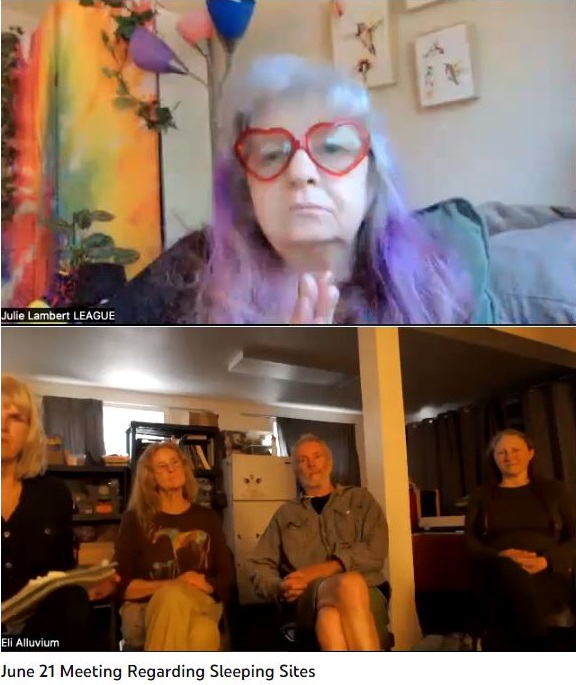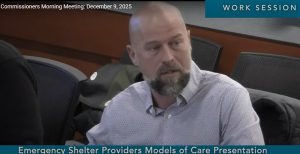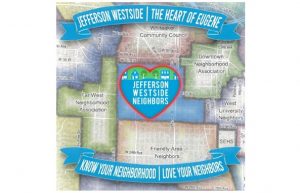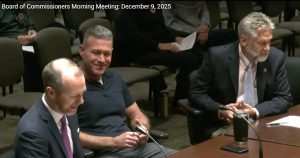Alluvium hosts discussion of survival housing gap
4 min read
Alluvium hosts a group that advocates for self-managed safe tent sites.
Todd Boyle: This project was started by Lynn Porter a few weeks ago in recognition of the gap between the lowest level of encampment or facility for homeless people that exists, which is, I think, the rest stops, the Conestoga villages. That is somewhat of a heavy lift. They cost money, they have staffing, and they have shared space, they have some heating facilities: A not-free, not particularly cheap solution.
[00:00:32] Meanwhile there are on the order of 1,000 people who don’t have any place to stay, and they are the street homeless.
[00:00:38] There ought to be something besides just having them be rousted and continually moved from place to place, losing their belongings and being sent a message by society every day that, ‘You are not welcome, you need to go away and disappear. And there is no place for you to go, but you need to go deal with it.’ It drives people’s stress levels right through the ceiling.
[00:00:58] If there was at least some sensible self-managed camp that was cheap enough that it could be implemented. (Yes.) And self-managed camps is the topic. Now self-managed camps have been tried. If there isn’t any order, if there isn’t any way of enforcing standards of behavior and discipline, then the trouble is there’s violence and so that ends up not being any better than just leaving people out in the unsheltered, unmanaged spaces.
[00:01:26] The self-managed camps that I’m familiar with in Seattle were organized at such a scale that the population of each encampment was close to 50 people, and they are completely non-government supported. And they are forced to move every couple of months because they rely on temporary places and church lands in the Seattle area.
[00:01:48] Because they have enough people, anywheres from 30 to 50 people, you have enough of a critical mass to provide some continuity, and you can, they do shifts to guard the gate. They have fences that they put up and that keeps unwelcome people from coming and going. In fact, it’s hard to get in there even as a neighbor.
[00:02:06] And they are very successful. These have been running for at least 20 years in the Seattle area.
[00:02:12] And then there’s Nicklesville, established as a self-managed encampment against the wishes of the city authorities. They had several strong charismatic leaders who were able to get people to cooperate and to apply peer pressure on people who didn’t behave well. And by gosh, they got it up and running and it’s been going for many years.
[00:02:31] It just reminds me a little bit of the original ‘Right To Rest’ out at Franklin Boulevard near the railroad crossing, which then evolved into Nightingale (Hosted Shelters). It had two strong leaders, of course, Red and Tracy, and others. And they were able to transition into being a 20-person Conestoga camp on 34th and Hilyard. That was the history of that place.
[00:02:52] So one strategy to actually achieve encampments is to somehow identify and develop with training the leader, because once you have a strong leader who’s willing to live on the site and be engaged, then the site will probably be a success.
[00:03:08] John Q: Leaders should be trained to do the work safely and kindly. Longtime local advocate Sabra Marcroft:
[00:03:14] Sabra Marcroft: I was one of the first five people sitting around a table dreaming up what became Opportunity Village, that eventually grew into Square One Villages. And I was around but never directly involved when Community Supported Shelters got going. I currently work for another nonprofit that manages safe sleep sites…
[00:03:40] Safely and kindly. There are two big areas where it’s very important to get the right kind of training, to have skills in order to do this work.
[00:03:53] John Q: Hosting the meeting, Eli at Alluvium:
[00:03:56] Eli (Alluvium): So I think the next step is for us to say, this is a group that is formed around the proposal of creating safe camping sites and here’s what we want to do next.
[00:04:06] So right now what I do is mostly just grab food and bring it back here and give it out to people. You may not be aware, but we give out 4,000 pounds of food: 4,000 pounds. We have a whole shed full of food. We give away food from Slice (Pizza), Voodoo Donuts.
[00:04:19] We feed 500 people a week that we know of. So there’s many, many more people beyond that that we serve. We have a whole family that comes here and just cooks almost every night just to give out food to all the free pantries. Not just this one here, but all the free pantries in the city.
[00:04:33] So if you’re ever here for any events, you can always bring us whatever you want from your closet or wherever you want from your pantry, anything that you don’t feel like you’re going to need, and we’ll get it to people who really need it and who can benefit a lot from it.
[00:04:45] John Q: Longtime local activists start planning a pilot project: Self-managed safe campsites. For more information, see the Homeless Action Facebook page and visit Alluvium at Third and Monroe.



